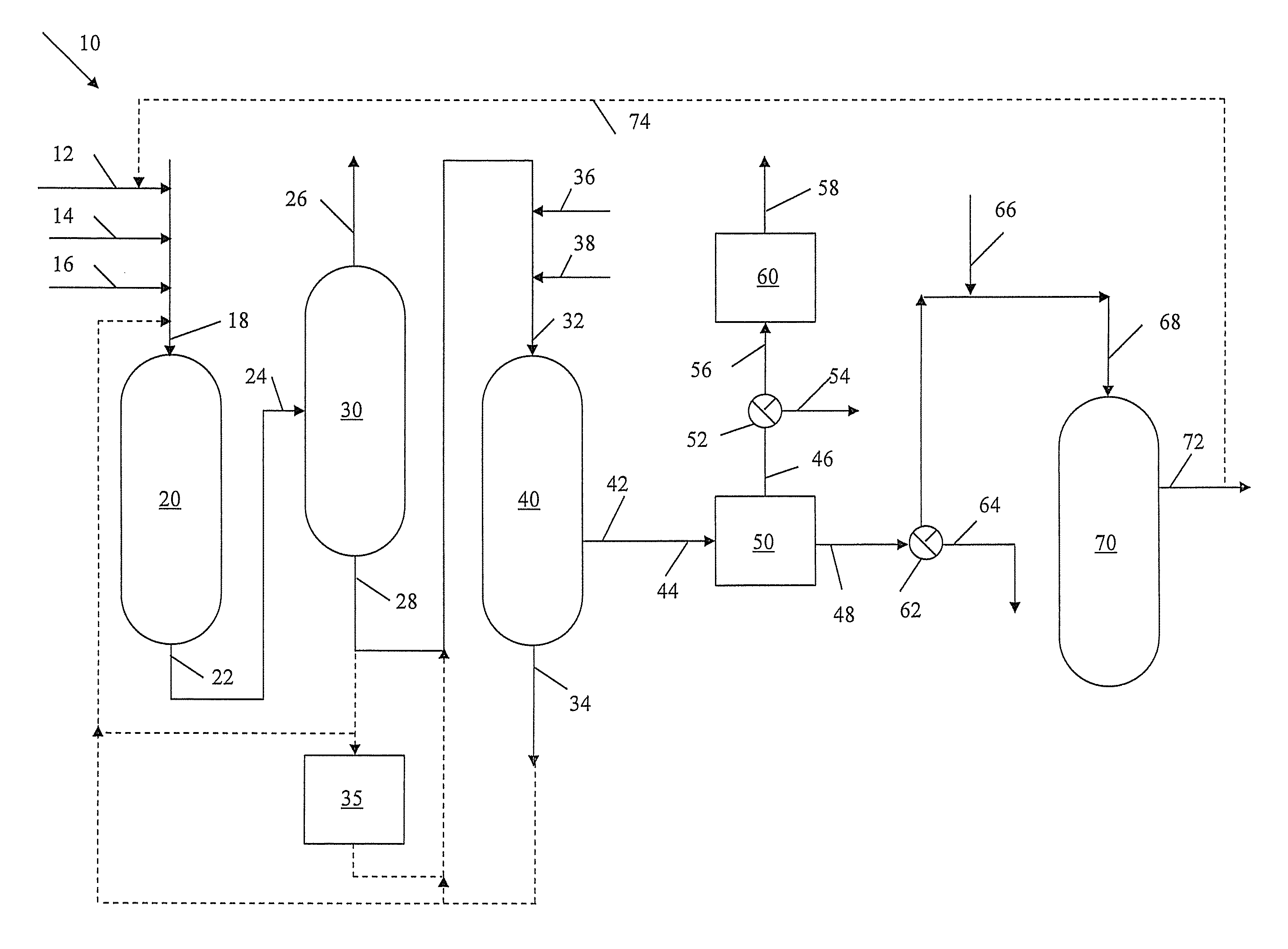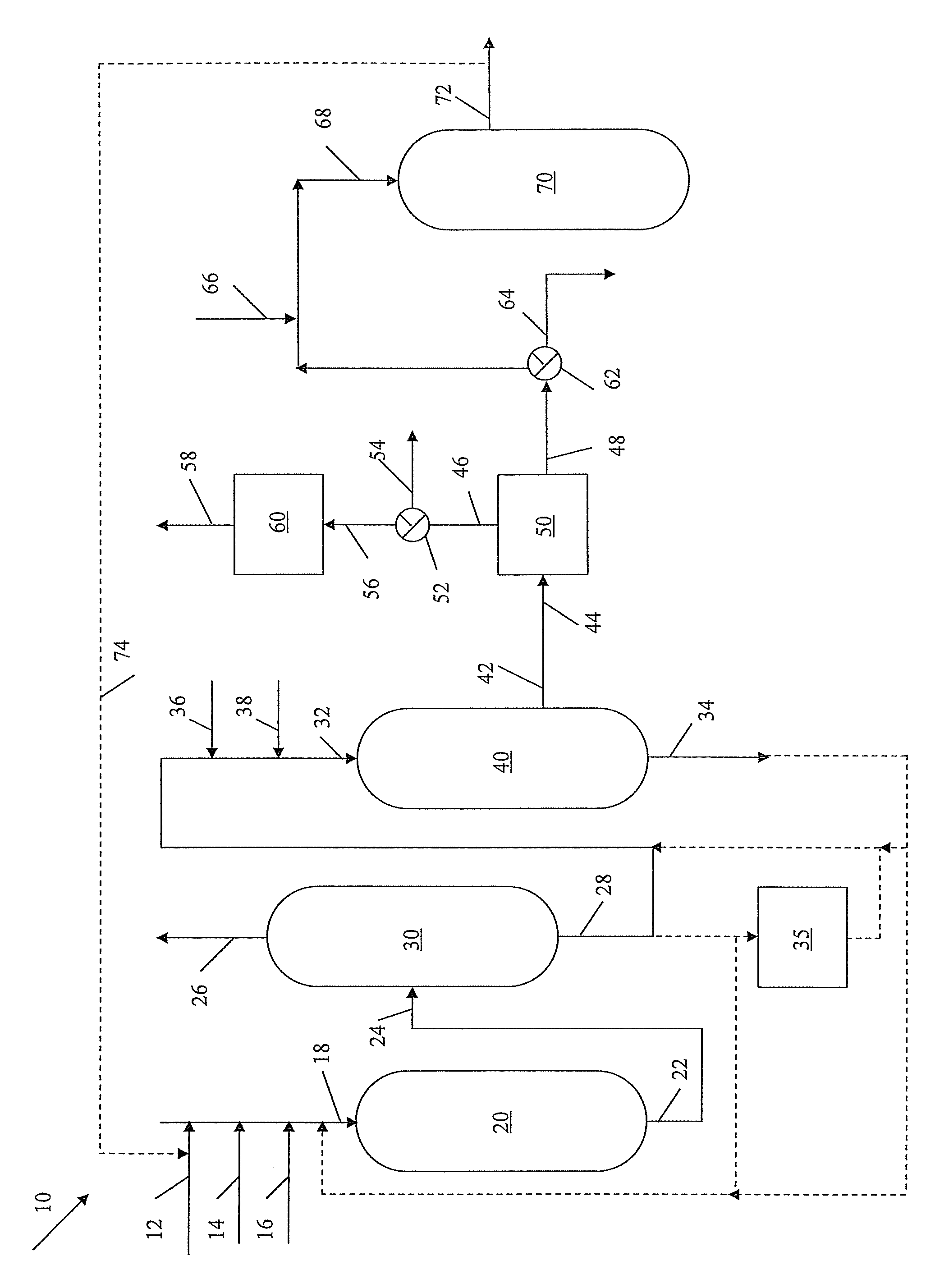Gasification of heavy residue with solid catalyst from slurry hydrocracking process
a technology of solid catalyst and heavy residue, which is applied in the direction of combustible gas chemical modification, combustible gas purification/modification, combustible gas production, etc., can solve the problems of high cost of design, large problems with fixed-bed technology, and commercial impracticality
- Summary
- Abstract
- Description
- Claims
- Application Information
AI Technical Summary
Benefits of technology
Problems solved by technology
Method used
Image
Examples
example
[0067]A 100 kg sample of vacuum residue boiling above 520° C. derived from Arab heavy crude oil was introduced as a pressurized feedstock into a slurry hydrocracking zone. The vacuum residue had an API gravity of 5.7 degrees and contained 5.3 W % of sulfur, 0.45 W % of nitrogen, 19.5 W % of C7-asphaltenes, 22.9 W % of CCR and 222 ppmw combined of nickel and vanadium. The slurry hydrocracking zone was operated at 420° C., 160 bars and liquid hourly space velocity of 0.5 h1. The catalyst was molybdenum sulfide on a solid support. The slurry hydrocracking conversion of vacuum residue was 85 W % and the resultant process yields are summarized in Table 1 below. The total hydrogen consumption was 1.6 W % of the feedstock processes.
[0068]
TABLE 1Slurry Hydrocracking YieldsProductBoiling PointYields W %Light GasesC1-C4 + H2S8.7NaphthaC5-170°C.0.9Gas oil170-350°C.26.2Vacuum Gas oil350-520°C.30.5Pitch>520°C.35.3Total101.6
[0069]After the separation of converted products, the heavy residue and s...
PUM
| Property | Measurement | Unit |
|---|---|---|
| operating temperature | aaaaa | aaaaa |
| operating pressure | aaaaa | aaaaa |
| operating temperature | aaaaa | aaaaa |
Abstract
Description
Claims
Application Information
 Login to View More
Login to View More - R&D
- Intellectual Property
- Life Sciences
- Materials
- Tech Scout
- Unparalleled Data Quality
- Higher Quality Content
- 60% Fewer Hallucinations
Browse by: Latest US Patents, China's latest patents, Technical Efficacy Thesaurus, Application Domain, Technology Topic, Popular Technical Reports.
© 2025 PatSnap. All rights reserved.Legal|Privacy policy|Modern Slavery Act Transparency Statement|Sitemap|About US| Contact US: help@patsnap.com


